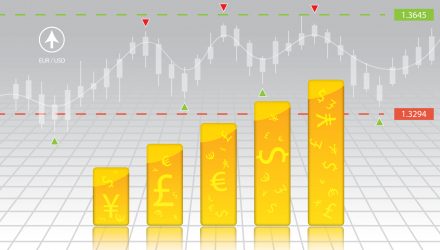Education on smart beta funds is catching on and it seems the more investors understand these alternative products, the more they want them—a good sign for providers looking to branch out from the run-of-the-mill passive product offerings. The U.S., in particular, is seeing an increased demand for low volatility and active products.
Brown Brothers Harriman, a provider of custodial and administrative services for ETF providers, recently released a report that examined the use of ETFs in three of the biggest global markets: the U.S., Europe, and China.
“Active and low-volatility ETFs tied for first with U.S. investors as the products they’d like to see more of in the marketplace,” Jeff Schlegel wrote in Financial Advisor magazine. “The was followed by core index and smart beta products.”
For investors looking to smoothen the ride of volatility, they can look at ETFs like the FlexShares US Quality Low Volatility Index Fund (NYSEArca: QLV). Per the site’s fund description, QLV integrates rigorous fundamental analysis through a quality screen of US-based companies which can be viewed as a potential means to mitigate future volatility.
QLV seeks investment results that correspond generally to the price and yield performance of the Northern Trust Quality Low Volatility Index. The underlying index is designed to reflect the performance of a selection of companies that, in aggregate, possess lower overall absolute volatility characteristics relative to the Northern Trust 1250 Index, a float-adjusted market capitalization weighted index of U.S. domiciled large- and mid-capitalization companies.
Additionally, based on the report results, investors around the world also want more smart beta ETFs that employ strategies that go beyond tracking a passive index.
“Smart beta ETFs hit a record $835 billion in assets in 2019, and 54% of global investors expect to raise their exposure to smart beta ETFs in 2020,” Schlegel wrote. “That’s 10 percentage points more than last year.”
ESG Keeps Rising
Of course, a persistent trend in the investment world is the continued rise of environmental, social and governance (ESG) initiatives. That’s translating into more demand for ETFs that focus on ESG.
“For a while it seemed that ESG ETFs were more hype than asset flows,” said Schlegel. “But flows into this category picked up last year, and in five years it’s expected that 30% of global ETF investors will allocate 11% to 20% of their portfolio to ESG ETFs. And it’s projected that 12% of U.S. ETF investors will allocate more than 50% of their portfolios to ESG ETFs in the next five years, far exceeding the rates in Europe and China.”
For other notable trends in the ETF industry, read the rest of the report highlights.
For more market trends, visit ETF Trends.
